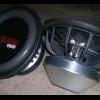
Tell me about Resonant Frequency
By
blue fury, in Subwoofers / Speakers
-
Recently Browsing 0 members
No registered users viewing this page.
-
-
Recent Topics
-
- 7 comments
- 474 views
-
- 1 comment
- 694 views
-
- 1 comment
- 235 views
-
- 3 comments
- 1,119 views
-
- 8 comments
- 2,045 views
-
- 1 comment
- 196 views
-
-
-
Recent YouTube Posts

